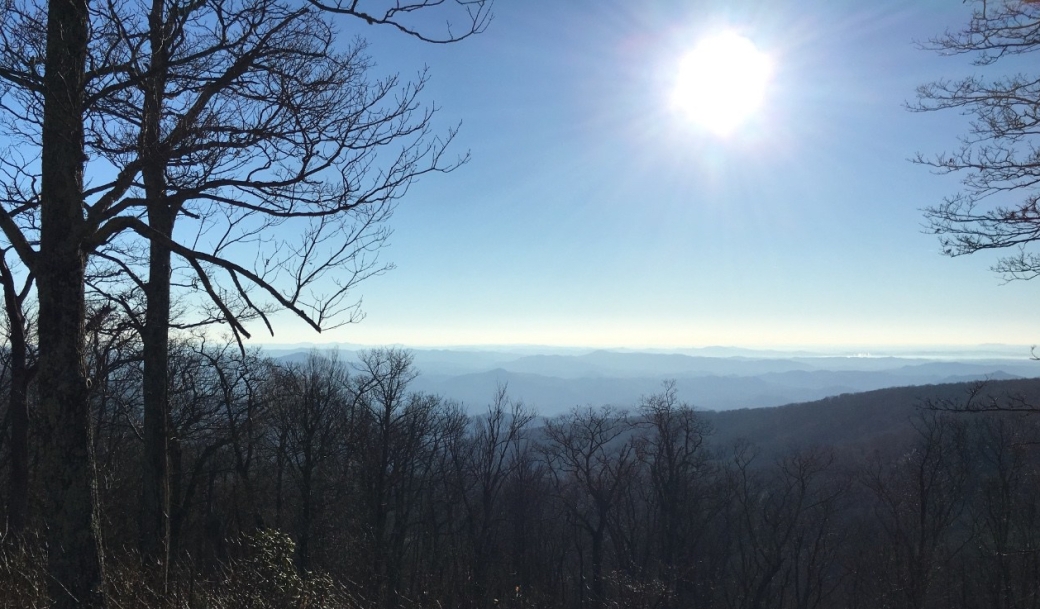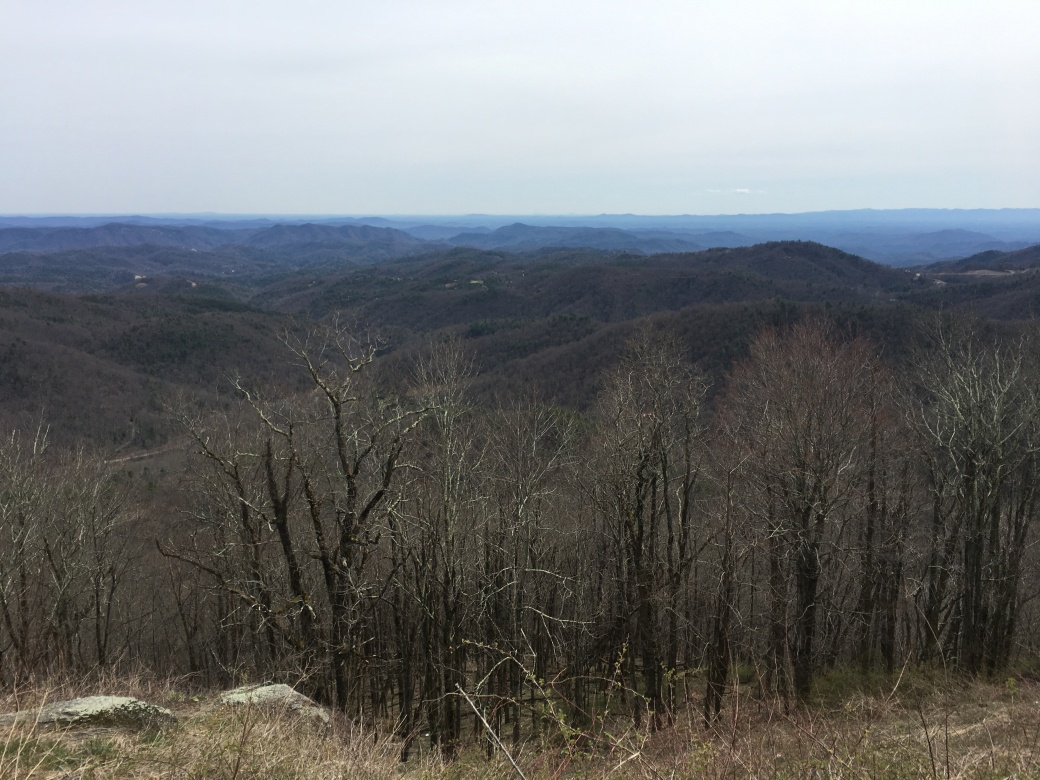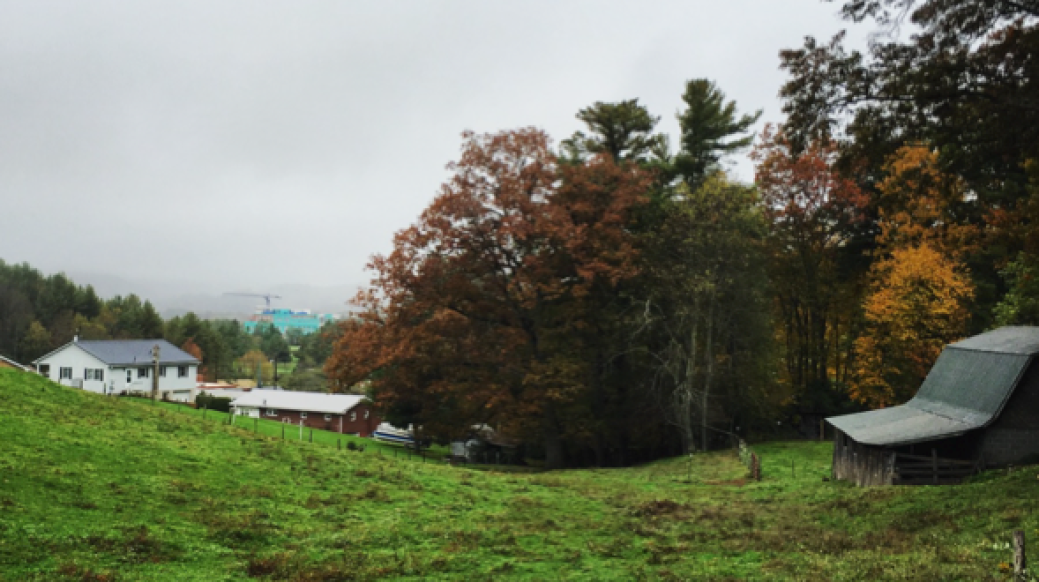
A view of Appalachian Mountains taken from the Green Mountain Overlook (elevation 4134 ft.)
The Appalachian Mountains rise up majestically from the foothills, a seemingly endless stretch of land that rises and falls, rises and falls into the distance. These are some of the oldest mountains in the world, approximately 300 to 500 million years old.
Boone, Watauga County’s largest town, is at 3,333 feet above sea level. The highest peaks in Watauga rise up to nearly 6,000 feet. They may be ‘shorties” compared to the Rockies, but when the settlers first set out to explore the western reaches of America, the Appalachian Mountains were a significant barrier to westward expansion and settlement.
Until the 20th century, Watauga was one of the three “lost provinces” of western North Carolina – along with Allegheny and Ashe Counties – mountain areas so remote and so difficult to access that the joke was “the only way to get there was to be born there.”
When you return home to Watauga County after a trip off the mountain, it’s a reminder, always, of the challenges faced by the initial settlers to this region. The car engine groans under the weight of the climb. The turns are sharp. The ascent is steep. In a car, it takes about 45 minutes or so to get back up the mountain from the nearest town in the foothills below. Looking at the undulating waves of mountains that stretch into the distance and the heavily wooded forests that still remain in this area, it is almost impossible to imagine the settlers winding through this area in their wagons.

One of the first European people to explore this area was August Gottlieb Spangenberg, a German-born Moravian Bishop who came to America on a mission to establish a Moravian church in the New World. Land in North Carolina was cheap and plentiful and Spangenberg found himself exploring western North Carolina to determine the best location for his church. In 1752, he set out from Yadkin Valley to head up into the mountains.
His journey was arduous and dangerous. Reading his diary provides insights into the challenges faced by the original settlers of Watauga County:
“Dec 3. 1752. From the Camp on a River in an old Indian field, wh. is either the Head, or a branch of New River, wh. flows through N. C. to Va & into the Miss. River. Here we have at length arrived after a very toilsome journey, over fearful mountains & dangerous cliffs. A hunter whom we had taken along to show us the way to the Yadkin, missed the right path, & we came into a region from wh. there was no outlet, except by climbing up an indescribably steep mountain. Part of the way we had to crawl on hands and feet; sometimes we had to take the baggage & saddles & the horses, & drag them up the mountains (for the horses were in danger of falling down backward—as we had once had an experience) & sometimes we had to pull the horses up, while they trembled & quivered like leaves.”
Spangenberg inexplicably traveled up the “indescribably steep mountain” in middle of winter. He and his small team of travelers camped on beds of leaves, pulled horses up steep slopes, encountered uncrossable rivers filled with rocks and “precipitously steep banks.” They rejoiced when they found a beautiful meadow to set up camp, but a storm blew up as soon as they pitched their tents:
“We pitched our tent, but scarcely had we finished when such a fierce wind storm burst upon us, that we could scarcely protect ourselves against it. I can not remember that I have ever in Winter anywhere encountered so hard, or so cold a wind. The ground was soon covered with snow ankle deep—& the water froze for us aside the fire. Our people became thoroughly disheartened. Our horses would certainly perish & we with them. The next day we had fine sunshine, & then warmer days though the nights were ‘horribly’ cold.”

When they reached the top of the mountain, the views were glorious.
“Arrived on the top at last, we saw hundreds of mountain peaks all around us, presenting a spectacle like ocean waves in a storm.”
In the end, the mountains proved too challenging for the Bishop in search of a home for his church. He left the mountains and returned to the Yadkin Valley area where the Moravians continue to have a presence in Winston-Salem. In his diary, Spangenberg gives us a detailed account of the difficulties of traveling into the mountains – and he also shares his vision of the mountains as “ocean waves in a storm.”
In reading of Spangenberg’s “very toilsome journey, over fearful mountains & dangerous cliffs,” one thinks of the original settlers to this area – the families that hauled all they owned up the mountain, cleared the land of trees and rocks, built new communities in the mountains and it’s clear that the original settlers of Watauga County were a breed all their own, leaving the verdant valleys of the lowlands and settling down in a remote, isolated and beautiful part of the world. More on that to come…









